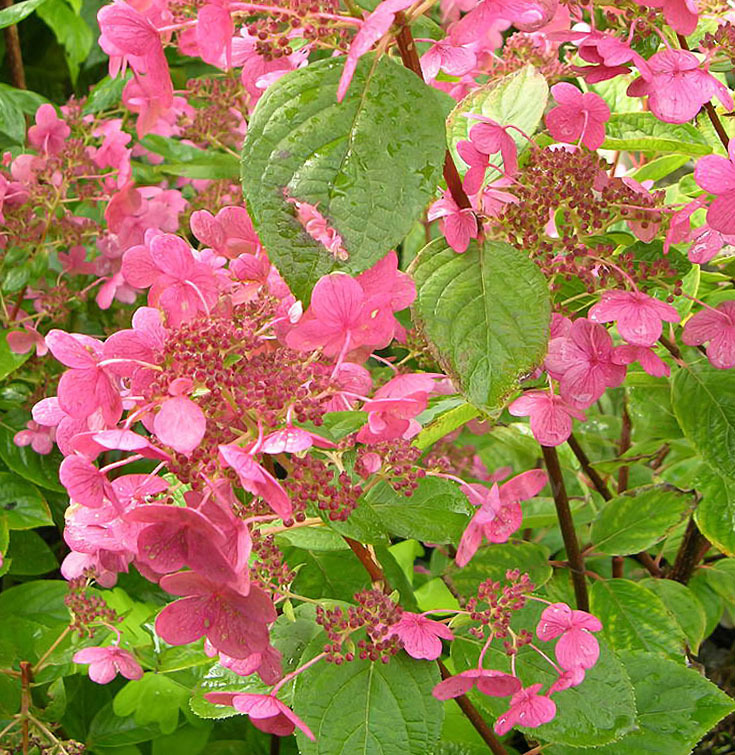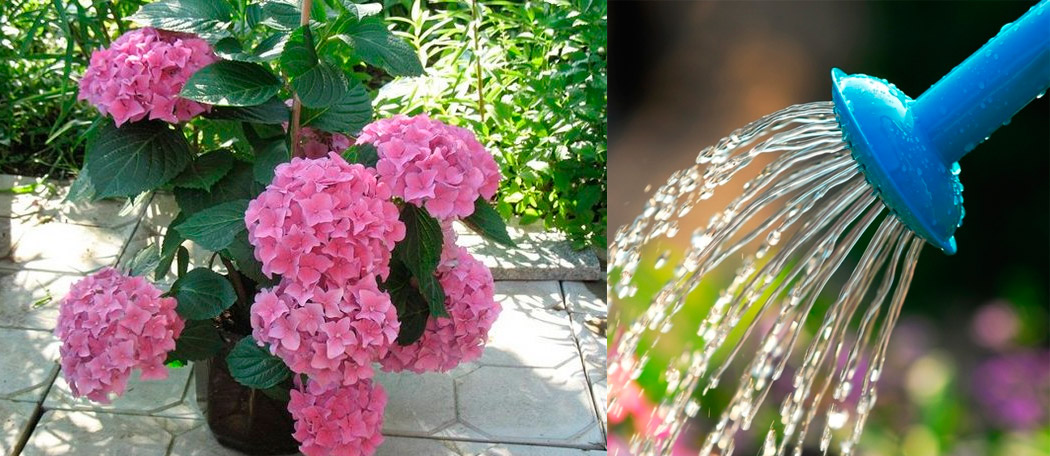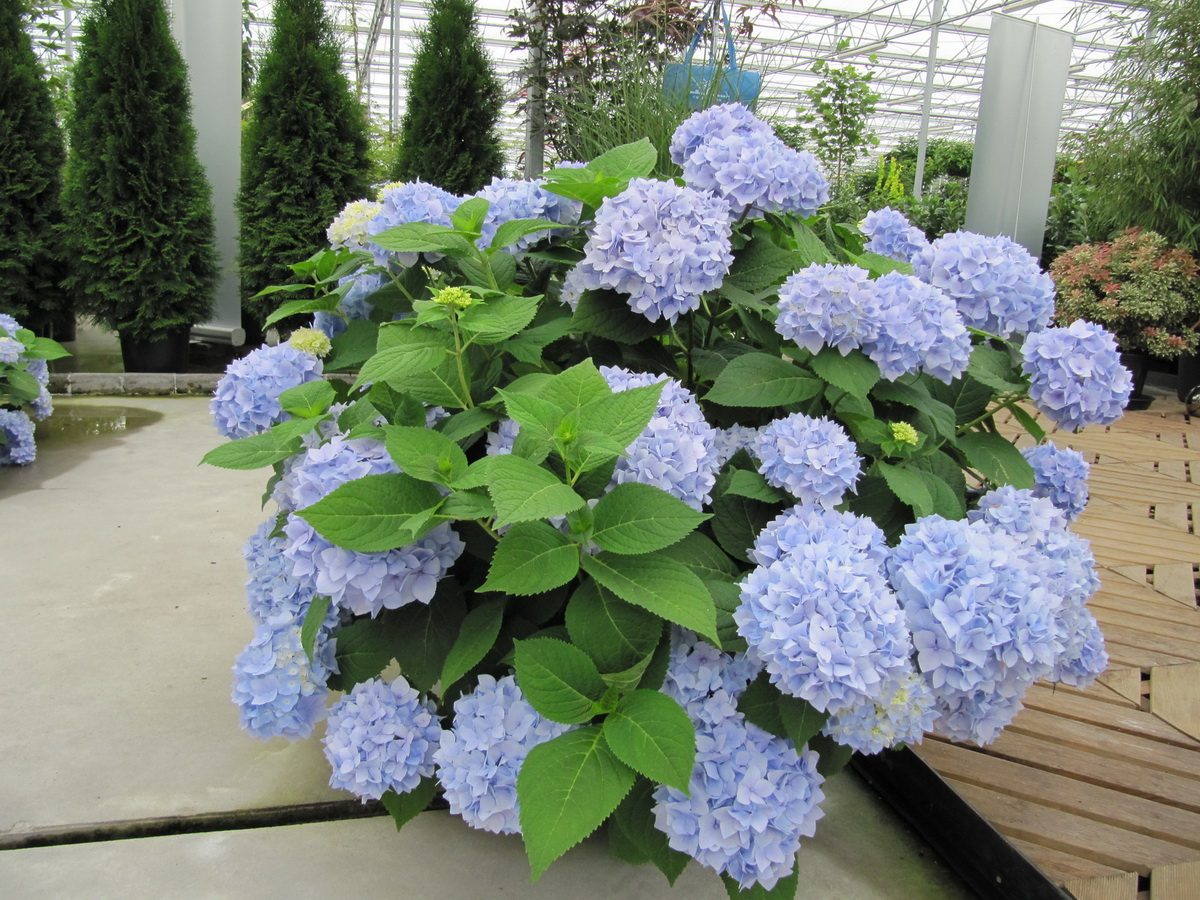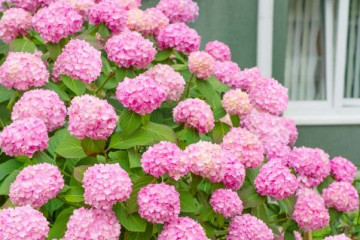Hydrangea Early Sensation or Early Sensation
Content:
This species begins to bloom in early June and pleases the eye with its buds until the end of October. It is a bush flower that grows to a height of 2 m. Hydrangea Earley Senseishen loves water, so the soil in which it grows must be constantly moist. It is undemanding to light, therefore it can grow both in the sun and in the shade.
Origin and appearance
This shrub began to grow in Holland. Hydrangea Early Sensation got its name only 15 years after selection. The name of the variety is translated from Latin as hydrangea "Early sensation". It is grown all over Russia. It grows for 50-60 years, therefore it belongs to perennials.
It is quite tall and large-leaved. On average, it reaches a height of 1.5-1.8 m. The highest reaches 2 m. The leaves of the flower have one feature: in summer they are dark green in color, and in autumn they are purple. The plant belongs to the deciduous type. The root system is fibrous.
Hydrangea Paniculata sensation blooms in large buds. It looks like a lilac, only larger. It blooms for a long time under favorable conditions. The buds begin to open at the beginning of summer, and end when the first frost appears. Even the leaves are not visible behind its flowers, resembling caps.
When the hydrangea begins to bloom, its buds are pale pink, and by the middle of summer they become bright pink. Closer to autumn, the buds become bright red or burgundy.
Transplant after purchase in open ground
This plant can be transplanted from the beginning of September so that it can settle in the new soil before the first frost begins. Or it can be done after frost: from late March to early May. Each planting season has its drawbacks. If you plant it in the fall, then the bush may not have time to take root before the first frost begins. Dignity includes early flowering. The disadvantage of spring planting is that late spring frosts can occur. If this happens, then the bush will either die, or the flowering period will be postponed. Because of this, experienced gardeners prefer to plant hydrangeas in late August or early September.
It is generally not recommended to replant shrubs in summer. Since flowering takes a lot of energy from Airlie Sensen, her transplanting in the summer may lead to the fact that she will not bloom for the next couple of seasons.
What is needed for landing
It is better to plant a flower in soil, the acidity of which should not be great. The land where the plant is planted must be loose so that moisture does not stagnate.
Choosing the best place
Hortense Senseishen loves the sun, but in moderation. It is better to plant it in a lighted area, but not in direct sunlight. If you put it in the shade, then it will not bloom. Better to plant it on the west or east side of the site. If you bear in mind the description, then it is better to plant near the fence and retreat from it by about one and a half meters, since the flower becomes large enough when it grows.
Step-by-step planting process:
- The hydrangea is planted in a pit 50 cm wide and 70 cm deep.
- At the bottom of the pit, you need to pour fertilizer, about 30 g of superphosphate.
- It is necessary to prepare a soil mixture of black soil, humus, river sand and high moor peat.
- Place the plant in a hole, gently straighten the roots and cover with soil mixture.
- It is good to crush the ground and pour with two buckets of water.
Reproduction
Propagation of hydrangeas of this variety is possible in several ways.
- Cuttings. They are harvested when they are pruning the bushes. This is the most common breeding method.
- From layering. Layers are shoots from the bottom of the bush. It is better to bury them in early spring.
- Division of the bush. To begin with, the bush needs to be watered well, dig up and remove the soil from the roots. Then you need to divide it into several parts and plant them separately from each other.
Care
The care has its own nuances that you need to know:
Watering mode
It is necessary to water the plant regularly, since its root system does not go deep, but spreads close to the surface, it cannot get moisture from the lower layers. Watering begins at the beginning of the appearance of buds and ends in the fall before the snow falls.
You need to water the flower 2 times a week. If it rained heavily, then one procedure can be skipped.
Top dressing
Top dressing should be started in the spring in order to saturate the plant with useful fertilizer for the season. When the buds appear, it is necessary to carry out a second feeding. A fertilizer with a low nitrogen content is suitable for this. The third feeding is carried out in the fall. For this, potassium and phosphorus are used.
Features of care during the flowering period
In order for Erlee Senseishen to please with her beauty, the land under the bush must be weeded out, loosened, fed and properly watered. For the first two years, the plant does not need to be fertilized, since it is planted in the soil with fertilizers.
Preparing for winter
Hydrangea Senseishen is a fairly frost-resistant plant. She can survive a 29-degree frost, but not lingering. If the climate where the hydrangea grows is too harsh, then it is better to insulate the roots with straw for the winter and cover it with foil. A young plant, which is a year or two, needs to be insulated in any case.
Thus, the Erle Senseishen hydrangea is an unpretentious bush. It is especially pleasant to look at it during flowering. It looks very good in combination with blue spruce trees, but it is best to make a hedge out of it.



















